Making your home more energy efficient has real advantages for you and your monthly finances. Even slight efficiency gains will have an effect on the price you pay monthly for your energy. The more aggressively you make efficiency gains, the more money you should ultimately be able to save. These are savings that arise month after month, year after year, and so the sooner you get to work to improve home energy efficiency, the better! Here are 15 energy efficient home improvements to get started on now.
Benefits of Home Energy Efficiency
Making your home more energy efficient comes with major financial benefits, and it helps minimize individual carbon footprints. Every homeowner should consider making improvements to see these monetary savings – especially those preparing to sell their home. Greater energy efficiency is a strong selling point, and this commonly has a bearing on the ultimate resale value of more efficient properties.
15 Tips To Improve Home Energy Efficiency
With these tips on How to be More Energy Efficient at Home you can go green and save green! Sometimes making your home more energy efficient can seem like a big effort for little reward, but the truth is there are both small and large changes that WILL make a difference. Some of these changes are easy to implement and cost very little, whereas others require the installation of new equipment that may be expensive in the short term, but will offer savings in energy and money in the long term. Here is how to improve home energy efficiency:
Improving Insulation
By reducing waste through good insulation, homeowners can help keep more of the heat they generate indoors. This means that heating (and cooling) the home require less energy, and are therefore cheaper processes both now and forever. The main culprits for heat loss are the windows, doors and the roof of your home – essentially, anywhere that heat can feasibly escape from the building. By up-rating each of these elements, it can be possible to eradicate this problem altogether. You may also want to check into cavity wall insulation.
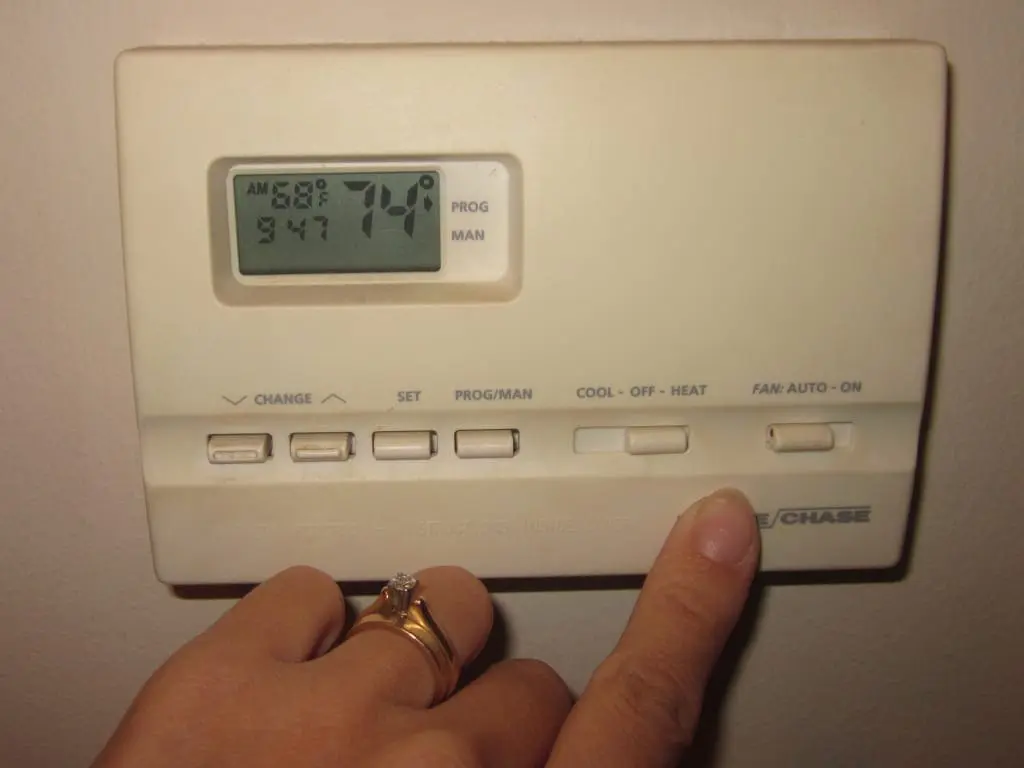
Programable Thermostat
A programable thermostat allows you to preset the thermostat to use less energy on heating and cooling when you are not home or when you are sleeping. This is a must do update that costs very little compared to how much it will save you. The new smart thermostats offer even more features and convenience.
Update Windows
Looking for more efficient home upgrades? Double or even triple glazed windows help with both energy efficiency and soundproofing. These are now industry standard, but older homes may still have single glazed windows. Single glazed windows are much more likely to leak heat, and will be less energy efficient as a result. In this sense, single glazed windows are more expensive to own, because they lead to more significant energy costs on a monthly basis.
Energy Efficient Doors
Similarly, some doors are more energy efficient than others. External doors are the main concern to improve home energy efficiency, and it is worth opting for a solid or an insulated door to begin with. Improvements can also be made in the seals and joints around the door, which can be better insulated to prevent heat from escaping.
Both door and window installation and up-rating can be handled as a DIY project. You don’t need to do much in order to make improvements in these areas, and even those with modest household expertise should be able to pull it off.
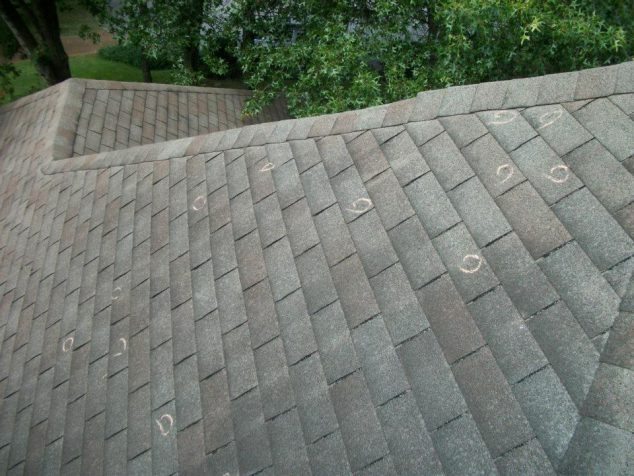
Energy Efficient Roof and Attic
When it comes to improvements in the attic and on your roof, it makes more sense to call in a professional. Messing with the structure of your family home can have a potentially devastating impact and climbing on rooftops can be dangerous.
Expertise in this roofing services is essential to avoid damaging your home. In some cases, it may be a simple case of just laying insulation in the attic to help preserve heat. However, it may be necessary to install a new type of roof, or to relay the tiling, in order to make your home more inherently energy efficient. This can require time and up-front investment, but is likely to make the single biggest contribution to savings on your energy bills where this work is required.
Solar Panels
Solar panels are a fantastic choice for improving home energy efficiency. They can reduce or even eliminate your electricity bills, decrease your carbon footprint, and potentially increase the value of your home. However, the cost of installation can be significant, so it’s important to consider your budget and available incentives or rebates. Additionally, you’ll want to ensure that your roof is in good condition and suitable for solar panel installation, as well as check local regulations and permits.
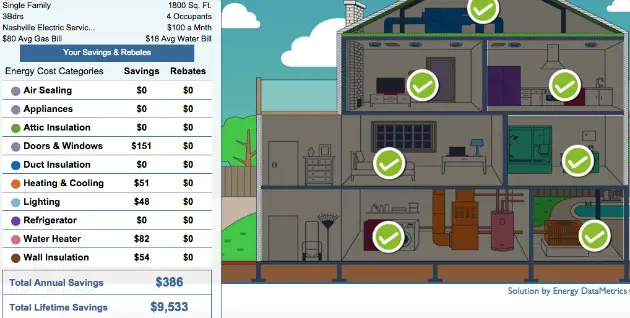
Home Energy Audit
A comprehensive home energy audit done on your house can help you objectively determine where the leaks may be occurring. Learning if your home is energy efficient and what the areas are that need improvement helps you to go greener and reduce expenses.
Derek Pace of Pro Energy Consultants set up a time that was convenient for me and came out and conducted my home energy audit. Now, the thing that made me most confident in Pro Energy services is that they are an unbiased, third party working for the home owner and NOT SELLING any products! I knew before he got started that he wasn’t going to hit me up to buy a new furnace or put in new windows. There was no sales pressure whatsoever because they only sell the audit itself. Knowing that, really makes the audit a much more valuable service because they are just working to provide you with information on your home. I recommend this.
Or if home energy audits turn out to me expensive in your area, you may prefer a app called HomeSelfe that helps you save money on energy bills. It offers you an easy, free evaluation on your home’s energy inefficiencies and shares solutions and ways of saving energy. It is not quite as customized of an audit but it is free and makes useful and makes suggestions for energy-efficient home improvements.
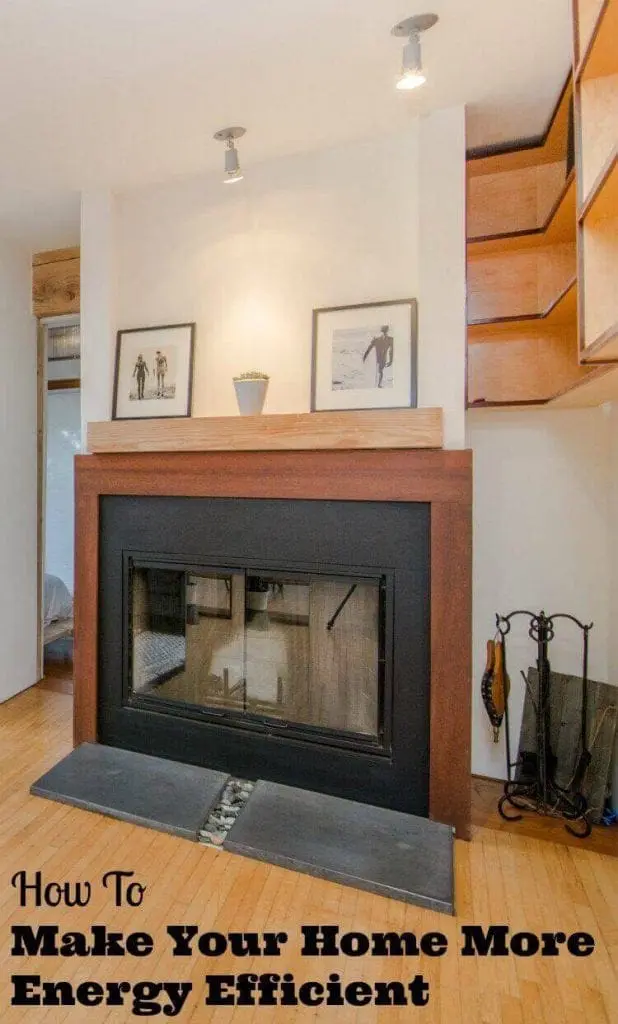
Purchase energy efficient appliances
It’s important to understand how replacing your old household can be an effective way to lower the overall cost of your bills. Technology is changing daily and with the recent push for eco-friendly living there has been many advancements with household appliances. By replacing the washing machine and dryer with newer energy efficient models you will reduce the wasted water and power that are used within the old model – finally reducing the expenses for your household in the long term.
Luckily big brands are making it easy for us to decipher the energy ratings between appliances with the use of a handy ‘energy star rating’. Compare the energy and water usage of each model before settling on a purchase, most sales assistants will even be able to give you an estimation of you current appliances energy usage – this really helps to see the value in your new product. Old fridge-freezers are particularly high-energy users especially if the door seals aren’t in the best condition. Think of energy saving appliances as building blocks on the road to reducing your operating costs of living in your home.
Tips to Make Your Current Refrigerator More Energy Efficient
Whether you are using a new Energy Star energy efficient refrigerator or older model, there are some things you can do to improve the energy efficiency of your refrigerator even more.
Refrigerator placement can actually have a large impact on its energy efficiency. The refrigerator should have room on all sides (between walls, cabinets and counters) for air flow. This will allow your refrigerator to operate more efficiently and prevent premature burnout of the motor. The refrigerator should not be placed next to the stove, dishwasher or other sources of heat (such as direct sunlight) as this would cause the refrigerator to work harder than it needs to and waste energy.
Cleaning the refrigerator condenser coils and removing built up dust is another way to improve the energy efficiency of your refrigerator. This should be done at least once a year.
Plan ahead and know what you want to get out of the refrigerator before you open the door. Keep your refrigerator organized, with a drawer for fruit, a drawer for vegetables, an area for beverages and meat, etc. This will help you be able to reduce the amount of time you keep your refrigerator door open and reduce the amount of energy it will take to cool the refrigerator back down to proper temperature when you shut the door.
Set your fridge temperature to be between 36-40 degrees. Set your freezer temperature to be between 0-5 degrees. Keeping it any colder than these settings uses a significant amount of energy with no gain.
Draft-proofing your home
Draft-proofing is extremely important and will help to save energy usage in both the short and long term. Although you need adequate ventilation to avoid dampness, mildew and condensation most older homes are still losing 50% more heat than they need to be due to draughts. Draft-proofing exterior doors is reasonably simple and inexpensive. Some thermal lined drapes that run to the floor help to keep heat in, as do draft-stoppers for the bottom of your doors. If the seals around your old windows are particularly bad you may want to write and action plan for the installation of new sealed aluminum windows, although a slightly more expensive option, this will save money on energy bills immediately and act as a great selling-point for your home. Other ways to draught proof include covering cat doors, unused key holes, gaps in walls and around doors.
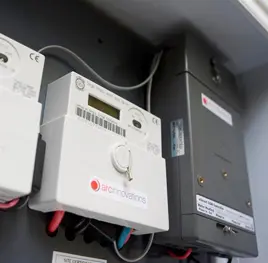
Energy Efficient Smart Meters
Smart Meters are now installed in many homes. The meters give you, the consumer, real-time information on how your energy use affects your energy costs. This helps you to identify when you are using more or less energy during the day, week or the month. Armed with this information you are able to easily review and evaluate, and therefore make informed decisions about the best plans and providers for your circumstances. It also allows your power company to provide you with better customer service. Smart meters also ensure that your energy bill is based on your actual, rather than estimated, usage. By managing our usage more efficiently at a collective level we will be able to ensure a better future for us and our children.
Avoid ghost loads
A ghost load or sometimes referred to as a phantom load is responsible for up to $150 worth of wasted electricity in the average home every year! It is created by appliances that consistently consume energy every minute of the day even though they aren’t in use. Although each device only uses a small amount of electricity while on standby the combined use of multiple appliances can be equal to the use of 3 60watt traditional bulbs all day and night!
So how do we identify ghost loads? The answer is simple, anything with a power brick that is plugged into your wall is using electricity; laptop chargers; gaming consoles; phone chargers; printers; fax; cordless products and microwaves. What’s worse is that even when you’re not charging your cell phone or the battery for your laptop, that AC adapter may continue to consume power just because it’s plugged into the wall. Other well-disguised ghost loads are appliances with stand-by features, such as LCD televisions, DVD players, computers and gaming consoles. While all of these devices are theoretically switched off, they are actually consuming anywhere from 3 to 20 watts consistently—just to stay ready for you to use them or switch on via remote.
We can reduce the impact of ghost loads by either unplugging the offending appliances completely, or with the use of a simple power board that has a on/off switch. This way you can simply cut electricity to all devices without unplugging each one individually. It’s great to get into the habit of doing this before bed and before leaving for work in the morning.
Update Lighting Fixtures
Light fixtures are a great way to update the look of a room and when replacing your old fixtures, be sure to chose Energy Star Certified light fixtures. This simple change can offer huge savings. According to Energy Star , these certified fixtures use about 70-90% less energy and produce about 70-90% less heat than traditional models using incandescent light bulbs.

Photo From thedailygreen.com
Use Energy Efficient Bulbs
CFLs or compact fluorescent lamps are an energy saving light bulb that uses 75 % less energy than traditional light bulbs. They offer the same amount of light and have a life span of 6-10 times that of a normal light bulb. Although they are slightly more expensive to buy outright, the bulbs offer a saving of 5 times it’s purchase price over the duration of it’s use.
The downside is that the bulbs contain mercury, so disposal needs to be treated carefully. Please do not throw them in your landfill, all recycling centers now have a designated CFL bulb area where you can responsibly and safely dispose of your old bulbs. Replacing the light bulbs in your home is an easy and inexpensive way of immediately cutting electricity bills and saving energy in your home.
Turn down your hot water heater
Many people set the temperature of their hot water cylinder too high. The ideal setting is 60°C or 140°F. It is important that the water in the cylinder is this hot to kill bacteria such as legionella but higher temperature settings only increase your power bill and can scald you (it only takes one second at 70°C or 158°F).
You can find the hot water heater thermostat under the protective lid on the side of or underneath the cylinder. It can usually be adjusted with a screwdriver. Many thermostats are not very accurate so you should test that the water comes out of the tap with a thermometer.
In most instances the maximum temperature of hot water supplied to sanitary fixtures provided for personal hygiene (e.g. showers, baths, hand basins) is 55ºC. This can be achieved by fitting a tempering valve to your cylinder. However, hot water to the kitchen and laundry may be at cylinder temperature.
The Building Code states that the maximum temperature at the tap is 45ºC for places such as childcare centers; schools; old people’s homes; etc. If there are young children in your home, you might want to consider adjusting your tempering valve on your hot water cylinder to lower the temperature to 45°C at the tap. This is a safe water temperature for children, ensuring they don’t get burned. Ask your local energy supplier or a licensed plumber for advice on how to adjust it, if necessary. Always ensure that the thermostat and element covers are in place on your cylinder to prevent electric shock.
Energy Efficient Home Improvement Credit
These energy efficient home improvements can sometimes save you money on your taxes as well. Currently, the federal government offers a Nonbusiness Energy Property Credit for making energy-efficient improvements to your home. This credit may allow you to claim up to 10% of the cost of certain energy-efficient upgrades. For example, installing energy-efficient windows, doors, insulation, roofs, and heating and cooling systems. The maximum credit is generally $500, but specific limits apply to different improvements. Please note that tax laws change frequently. Therefore, it’s best to consult the IRS website or a tax professional for the most current information and eligibility criteria.
Conclusion
I hope you enjoyed these tips for greener home energy use! Contemplating the bigger picture of our life-time energy consumption, carbon footprint and global warming should be enough to get you thinking about making small changes towards energy efficiency. Failing that, the money you will save is a great incentive.
These tips should help you improve home energy efficiency and lower your utility bills. Have you undertaken any projects to make your home greener? Which of these ways to improve home energy efficiency did you find most useful. Share your feedback on social media @familyfocusblog!
Related Posts:
Tips For Keeping DIY Projects Home Decorating Affordable

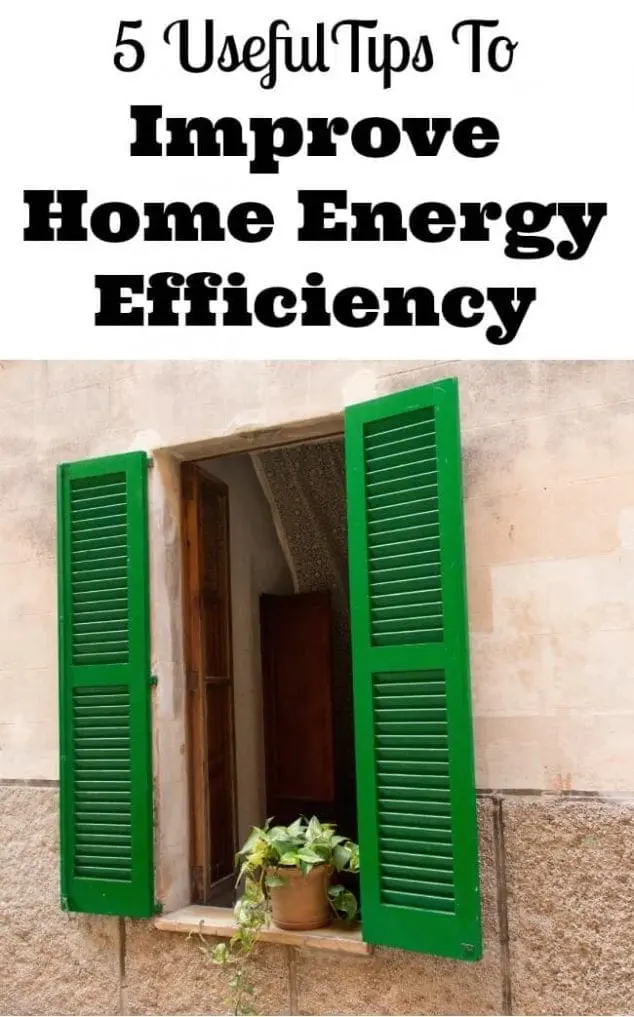
CelloMom says
Putting in a solar attic fan has allowed us to go without air conditioning: it makes a huge difference (and increases the lifetime of your roof, too). Paid for itself the very first summer.
Even if you’re not ready for the expense of a large retro-fit, simply turning your thermostat closer (and closer) to the outside temperature can save you a bundle, and can decrease the carbon footprint of your house substantially.
Scarlet says
Great tips CelloMom. I have actually been wanting a solar attic fan. Thanks for sharing your experience with it!
Dan says
Up here in Alaska we know all about energy efficiency, although we are focused on keeping warm more than cool. Definitely call in a professional to take a look at your roof. They should be able to assess the insulation value fairly easily and make recommendations for improvement. Improving insulation in your attic/roof can make a HUGE impact to comfort and energy use. Also, check the tax code for qualified energy efficiency improvements.